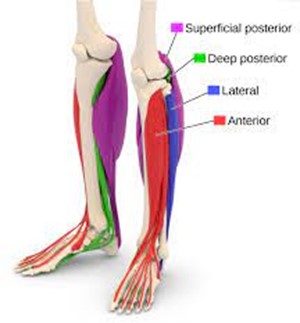|
If you have spent any significant time with the running population, you will likely have heard of the term “Shin Splints”. This generic term frequently used to describe shin pain can have several underlying causes which all result in an annoying disruption of time spent running! This article will explore the main factors that can result in the over-arching label of Shin Splints and the different terminologies that may be discovered when investigating this condition. With some further understanding of the subtle difference in presentation and possible causes, appropriate early management of pain could be achieved. Medial Tibial Stress Syndrome What is it? The medical world will more commonly describe exercise induced pain in the lower leg as ‘Medial Tibial Stress Syndrome’ (MTSS). This is thought to occur either when the muscles in the lower leg contract, causing a traction tension on the shin bone (Tibia) and tissue surrounding it (periosteum), or as a result of repetitive loading stress on the bone from impact activities. Its probably true that both schools of thought have relevance when considering the likely causes to this condition. What are the symptoms?
MTSS is classified as an overuse injury. It is commonly suffered among the running population due to the repeated impact stress to the lower limb experienced during this activity. Factors that can influence its prevalence are multiple and can be both intrinsic and extrinsic in nature. Intrinsic risks consider the biomechanics of the runner. Structural and postural inefficiencies such as low or high foot arches, the angle of the shin (tibial torsion or varum) or muscle imbalances can all have an impact on the stress on the muscle’s attachment to the bone. Extrinsically the risks are posed regarding sudden significant increases in running intensity (duration or frequency). Firm surfaces such as road running or hill running can cause additional stress. How to treat it
Stress fractures What is it? There are schools of thought that consider MTSS to be on a continuum, where the later stages present with a stress fracture to the Tibia. In essence a stress fracture is a repeated force creating stress on the bone at a rate greater than the bone can support. For a bone to adapt and become stronger it undergoes a degree of stress response. A healthy stress response causes microscopic degeneration of the bone which is sequentially reabsorbed creating a growth in the bone tissue. If this stress becomes more intense than the reabsorption rate, the microscopic degeneration increases and eventually a tiny crack in the bone can form. This is termed a stress fracture. If at this point the stress continues, the bone becomes at risk of a more significant fracture that is commonly recognised as a break. Tibial stress fractures are a common site. This bone is subjected to high impact weight bearing stress so is vulnerable when considering the activity of running. What are the symptoms?
How to treat it?
Anterior compartment Syndrome Chronic exertional compartment syndrome is something we have explored in a previous article www.taylormaderehab.com/blog/everything-you-need-to-know-about-calf-injuries-for-runners The lower leg is separated into 4 major compartments: the anterior, the superficial posterior, the deep posterior and the lateral compartment. The anterior compartment is in the front of the lower leg to the outside of the tibia. This syndrome can create symptoms that maybe mistaken for ‘shin splints’. What are the symptoms?
0 Comments
Your comment will be posted after it is approved.
Leave a Reply. |
Taylormade
|
PERFORMANCE AND REHABILITATION CLINIC
Injury Management and Conditioning Specialist
Taylormade Rehab, 1 Belle Vue, Fenny Bridges, Honiton, Devon EX14 3BJ | 07800 824557 | 07855 386634
© 2019 Taylormade | Performance & Rehabilitation Clinic. Injury Management & Conditioning Specialists | Website design by brightblueC
© 2019 Taylormade | Performance & Rehabilitation Clinic. Injury Management & Conditioning Specialists | Website design by brightblueC






 RSS Feed
RSS Feed
